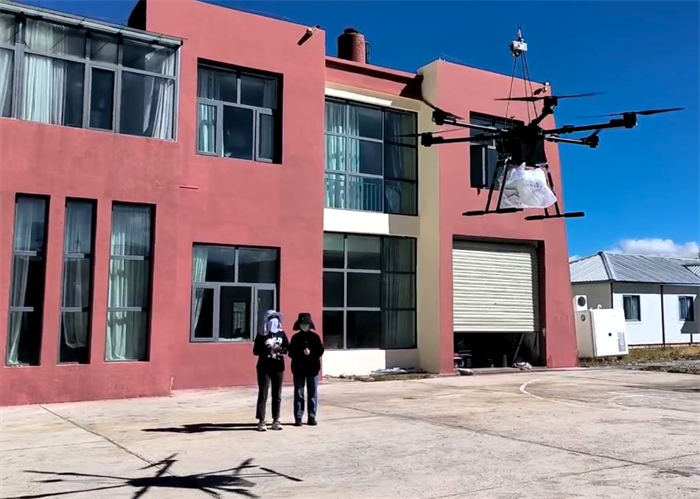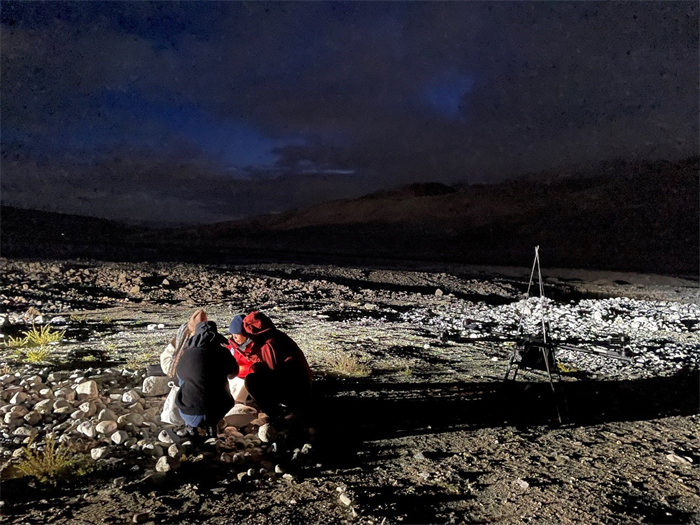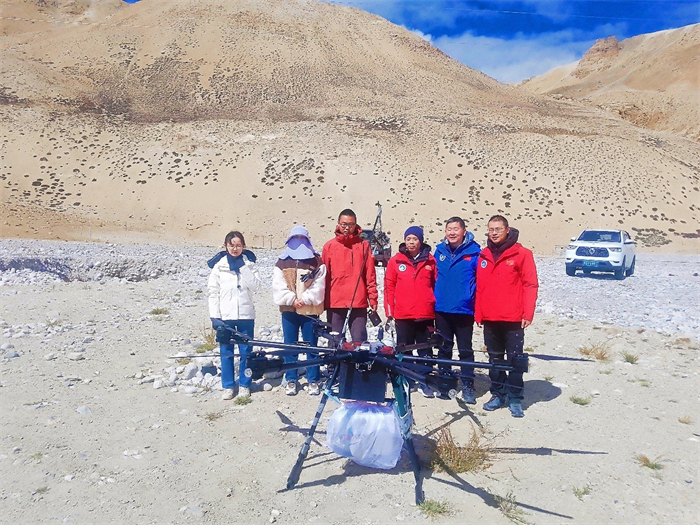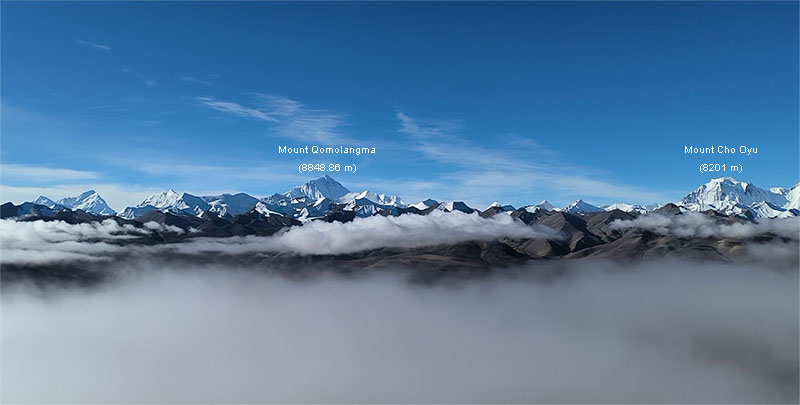For two members of the research team, QIAO Congcong and ZHOU Ying, both PhD candidates, this marked their inaugural exposure to the challenging high-altitude environment, where they grappled with extreme cold, oxygen deficiency, and physical fatigue at an elevation of 5,000 meters. Despite these hurdles, they actively participated in a range of scientific experiments, including, setting up tents, assembling equipment, calibrating instruments, operating UAV, and sampling gases and other scientific activities. They successfully fulfilled the gases sampling from ground to 1200m above ground in Qomolangma mountain area. The collected samples have been sent back to Beijing for further analysis and research.
Preparing for the UAV measurements in the dawn at Mount Cho Oyu base camp. (Image by IAP)
PIAO Shilong, Academician of the Chinese Academy of Sciences, observed the team's UAV measurements onsite and gave high praise. He underscored the substantial scientific significance of the field campaign: firstly, the UAV measurements will improve the precision and efficiency of greenhouse gas satellites monitoring in the Tibetan Plateau region; secondly, it will help to more accurately estimation of carbon sources and sinks in the Tibetan Plateau region through greenhouse gas vertical profiling, in combination with satellite remote sensing and the "GONGGA" four dimensional assimilation model, which is developed by the research team; and lastly, their significant contribution to a deeper understanding of greenhouse gas source and sink variation related to the on-going global warming, the warming and moistening of the Qinghai-Tibet Plateau, and their connections to human activities.
PIAO Shilong and the team. (Image by IAP)
Cho Oyu, positioned on the border between China and Nepal in the central Himalayas, is the world's sixth-highest peak, towering at 8,201 meters above sea level. Contrasting with the renowned "Roof of the World," Mount Qomolangma, the Cho Oyu region experiences more pronounced climatic changes. Notably, the summit of Cho Oyu boasts the most substantial snow and ice cover among all peaks above 8,000 meters. This coverage presents an invaluable repository of information concerning high-altitude climate change. Furthermore, it is worth highlighting that this expedition marks the first time that a Chinese scientific team has conducted field atmospheric observations on an 8,000-meter peak other than Mount Qomolangma.




